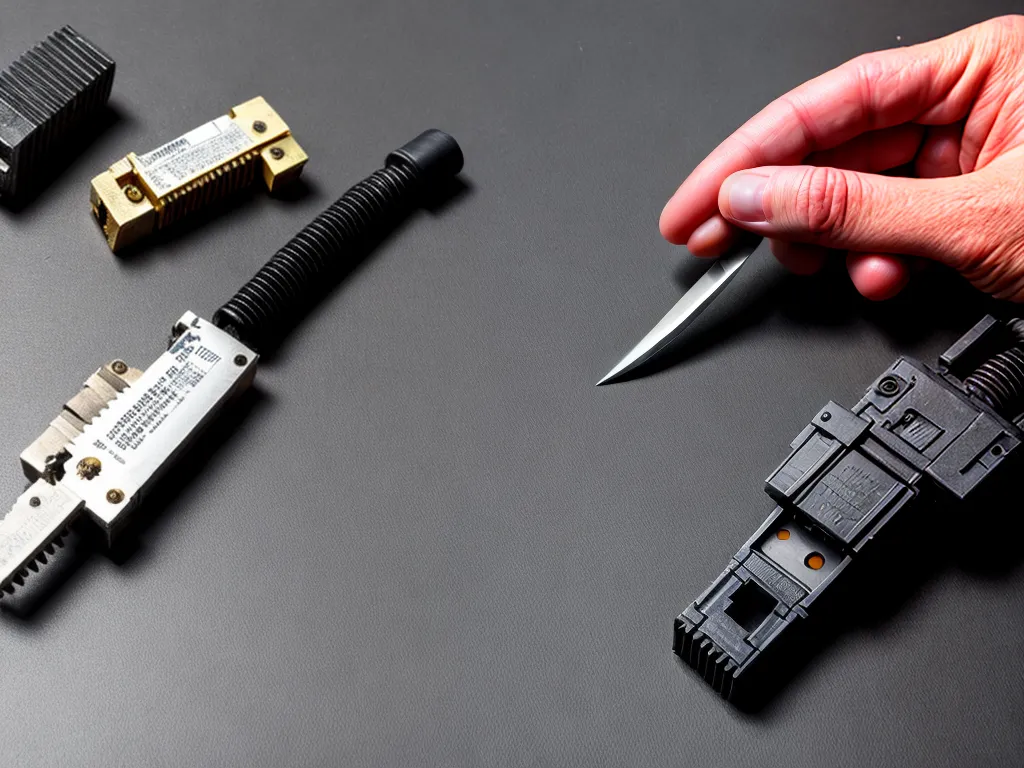
I've been working with electrical systems for over 20 years, and in that time I've come across my fair share of antique knife switches. While knife switches were common in older electrical setups, they can be tricky to troubleshoot and repair for those unfamiliar with the technology. In this guide, I'll walk through the common issues that can occur in obsolete knife switches and how to properly diagnose and fix them.
What Are Knife Switches?
Before jumping into troubleshooting, it's helpful to understand exactly what a knife switch is and how it operates. Knife switches are a type of electrical switch where a hinged blade physically separates from a contact to open or close the circuit. The name comes from the switch "blades" that slice in and out of the contacts.
Knife switches were commonly installed in older homes and commercial buildings in the late 19th and early 20th centuries. Compared to modern switches, knife switches have a more basic and rugged mechanical design. They do not contain any complex components and solely rely on the physical connection or disconnection of the blade contacts to function.
Common Problems in Obsolete Knife Switches
While simple in design, knife switches can degrade over time and develop a handful of common issues that prevent them from working properly. Here are some of the most frequent problems I encounter with antiquated knife switches:
Loose or Corroded Contacts
The contact points where the blade meets the conductor are exposed to air and can become loose, corroded, or coated in grime over decades of use. This can prevent a solid electrical connection when the switch is closed. I usually inspect and clean switch contact points first when troubleshooting.
Worn Out Springs
Knife switches rely on strong springs to snap the blade against the contacts with enough force to maintain a circuit. Over time, these springs can become fatigued and lose their tension. A weak spring allows the blade to vibrate loosely or separate slightly from the contacts.
Damaged Switch Blade
The thin, moving switch blade is prone to mechanical wear and tear over time. Switch blades can become bent, misaligned, or cracked with heavy use. Any physical blade damage can lead to intermittent contact and electrical issues.
Accumulated Dust and Dirt
Vintage knife switches are fully exposed to the elements. Dust, dirt, insect nests, and other debris accumulating in the switch body can impede blade movement or insulate the contacts. Frequent cleaning is key for longevity.
Broken Actuator Linkages
For manually operated switches, the mechanical linkages between the operating handle and switch blade can loosen or fracture over time. This leads to sloppy handle operation or prevents the blade from fully engaging.
Diagnosing Problems
When troubleshooting an obsolete knife switch, I follow a systematic process to identify the root cause:
1. Check for Debris and Corrosion
First, I remove the switch cover and inspect for any accumulated dust, dirt, or grime. I clean any corrosion or oxidation from the blade and contact surfaces using fine sandpaper or steel wool. Proper electrical contact depends on clean surfaces.
2. Test Blade Movement
Next, I verify that the switch blade still moves smoothly between the open and closed positions. If movement is stiff or grinding, it could indicate a worn out spring or physical damage to the blade or body.
3. Inspect Springs and Linkages
I remove any covers or accessories to expose the internal springs and mechanical linkages. I check that the springs still provide strong tension and visually inspect for any broken or malfunctioning components.
4. Check Resistance
Using a multimeter, I check the resistance between the switch terminals with the blade open and closed. This confirms whether the switch is making a solid connection when engaged. Any high resistance points to contact issues.
5. Perform Power Test
Finally, I conduct a live power test by wiring the switch into a test circuit and toggling power on and off. Any arcing, sparks, or failure to carry the test load indicates a problem with contact integrity.
Repairing and Maintaining Knife Switches
Once I've diagnosed the specific issue, repairs usually involve cleaning, adjustment, or replacement of worn switch components:
- Clean and polish tarnished contact points with emery cloth or a wire brush.
- Lubricate any sticky pivots or linkages with light machine oil.
- Reform or replace weakened or broken springs maintaining proper tension.
- Realign and tighten any loose or bent switch blade segments.
- Replace any damaged or deficient internal components like contacts, operating handles, and hardware.
I like to disassemble the entire switch, clean all parts thoroughly, and install new springs and hardware. This refurbishment helps ensure reliable performance. Ongoing maintenance involves periodic cleaning, lubrication, and inspection for wear. Properly serviced knife switches can provide many additional years of trouble-free use.
When to Consider a Modern Switch Upgrade
While I enjoy the challenge of reviving old electrical technology, there are certain situations where upgrading an obsolete knife switch to a modern enclosed safety switch is the best option:
- Components are too severely damaged or worn out for repair.
- Multiple issues recur frequently.
- Parts needed for repair are unavailable or prohibitively expensive.
- Improved short circuit protection is desired.
- Electrical needs have changed substantially.
If the switch becomes a chronic problem despite repairs, replacement is likely the right move. Modern switches are safer, more reliable, and designed to handle today's electrical loads.
Conclusion
While antiquated, knife switches remain a staple in some vintage electrical systems due to their simple design and repairability. By methodically troubleshooting, cleaning, lubricating, and replacing worn parts, most age-related issues can be remedied to restore normal switch function. But for severely damaged or inadequate switches, upgrading to a modern enclosed switch is the best long term solution. With a bit of expertise and effort, those classic knife switches can keep working smoothly for years to come.